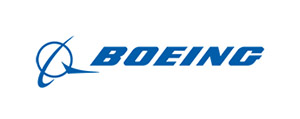Leeham News and Analysis
There's more to real news than a news release.
Boeing 2Q2017 earnings better than expected
July 26, 2017: Boeing reported better-than-expected 2Q2017 earnings today. Initial analyst reaction is below.
The press release is here.
The earnings call is at 10:30 am EDT. The link is here.
Mid-year production/delivery update for Boeing
Subscription required
Introduction
July 24, 2017, © Leeham Co.: Boeing’s 2Q earnings call is Wednesday and analysts will be watching for information about the 787 deferred production costs, potential production rate changes for the 787 and for the 777 Classic.
We looked at the 787 costs last week.
It’s also mid-year and LNC is taking an updated look and production and delivery rate streams for Boeing, Airbus, Bombardier and Embraer. The Airfinance Journal Fleet Tracker is our resource for this report.
We begin with Boeing in advance of its earnings call.
Summary
- A case can be made for taking 737 production rates to 60/mo.
- 777 Classic rates still may need to come down.
- 787 rate increase remains questionable.
Caution overhangs 777X program-(Update)
Update: This story is corrected.
July 21, 2017, © Leeham Co.: Lufthansa Airlines’ indications that it may reduce the order for 20 Boeing 777-9s underscores caution with which the program should be viewed.
Emirates Airline already rescheduled its first deliveries from 2020 to 2021.
The largest customer for the 777X, with 150 orders, EK is now pressured with falling profits, excess capacity and it’s one of three Gulf airlines under attack by the Big Three US carriers for alleged violations of Open Skies pacts.
Boeing 787 payback gap widens
By Bjorn Fehrm
Subscription Required
Introduction
July 20, 2017, © Leeham Co.: The 787 Dreamliner is now on its sixth delivery year, well past half calendar time in the program’s 1,300 unit accounting block (for the explanation of accounting block and program accounting read here).
Within two quarters we also reach half time for deliveries at 650 aircraft. Production cost improvements must now create a margin, so that the $30b deferred costs to date can be amortized by remaining units. Is the margin created? Not so far.
We will know more in a week’s time. Boeing has its 2Q2017 call next week, where the production cost improvements can be monitored through the decline of the $30bn deferred costs. Right now, the decline is at a slow pace.
 Summary:
Summary:
- Program accounting means deferred production costs shall be nil at the end of the accounting block.
- Right now, there is $30bn to amortize and not too many aircraft left that can pay the sum.
- We explore the payback margins necessary to reach a black nil at 1300 units.
Is Norwegian in trouble? Part 2
By Bjorn Fehrm
July 19, 2017, © Leeham Co.: Last week we raised the question if Norwegian Air Shuttle was in trouble. The CFO, Frode Foss, left a few days earlier. Analysts were worried and the stock dived 8%.
Last Friday, the airline presented its 2Q2017 result. An optimistic report. New destinations, increasing revenue and a profit of NOK 861m ($107m). But the stock tanked further, now down 11%. What’s behind the increased worry?
Business case for NMA remains uncertain
Subscription Required
Introduction
July 17, 2017, © Leeham Co.: We’re half way through 2017. Boeing reported orders through July 11, a week ago. Airbus won’t update its July orders until the end of the month.
Through July 11, Boeing reported 116 net wide-body orders: 15 for the 767, 33 for the 777 and 75 for the 787. Net cancellations of -7 for the 747 are included in the net 116 figure.
The 15 767s were not commercial models, however, but 767-2C tankers for the USAF.
Over at Airbus, none of China’s 40 commitments announced July 5 for 40 A350s are in the June summary, and won’t be in the Orders tally until the commitments turn into firm orders. Through June, airbus had net 26 widebody orders: three A330-200s and 29 A350-900. There were cancellations of four A330-800s and two A380s.
If the 40 China A350s were included, this would bring Airbus to 66 widebody orders, still well short of Boeing’s YTD figure.
Summary
- Airbus product gap widens as A330-200/800 stalls.
- Boeing 787 strength comes from 787-9; 787-8 remains minor player.
- Middle of the Market business case still unproved.
Is Norwegian in trouble?
By Bjorn Fehrm
July 11, 2017, © Leeham Co.: In our review of Norwegian Air Shuttle (Norwegian) the 8 of February, we pointed out the company’s ambitious fleet expansion plans with a rather weak balance sheet. We followed up with a second article the 15th of February where we analyzed the risky fleet plans further.
Last week, the longtime Norwegian CFO, Frode Foss, departed. It sent shock waves through analysts and the stock tanked 8% in a day.
The departure of a CFO is many times the pre-warning of troubled times. Foss was with Norwegian for 15 years. It was not a planned departure and Foss has no successor. The post is run by the Investor Relations manager in the interim. Read more
Read more



